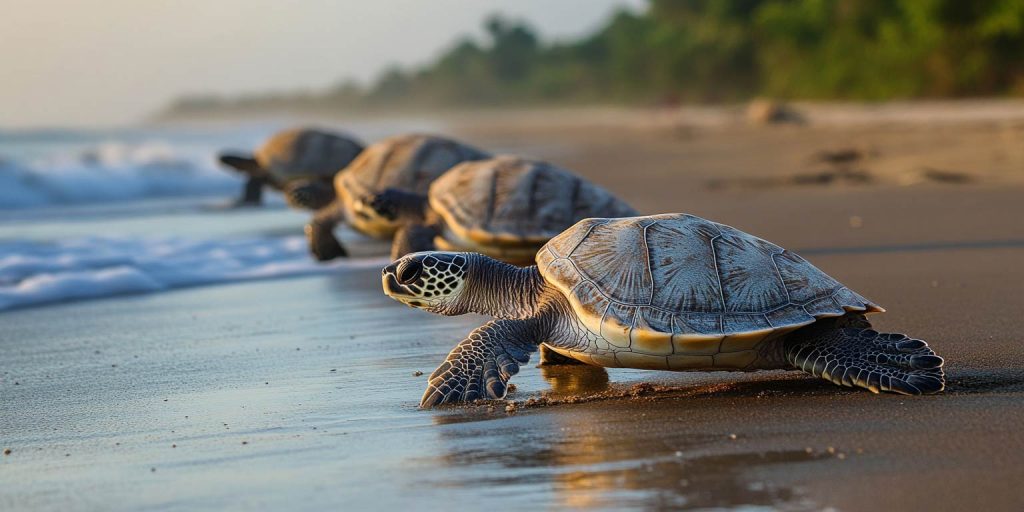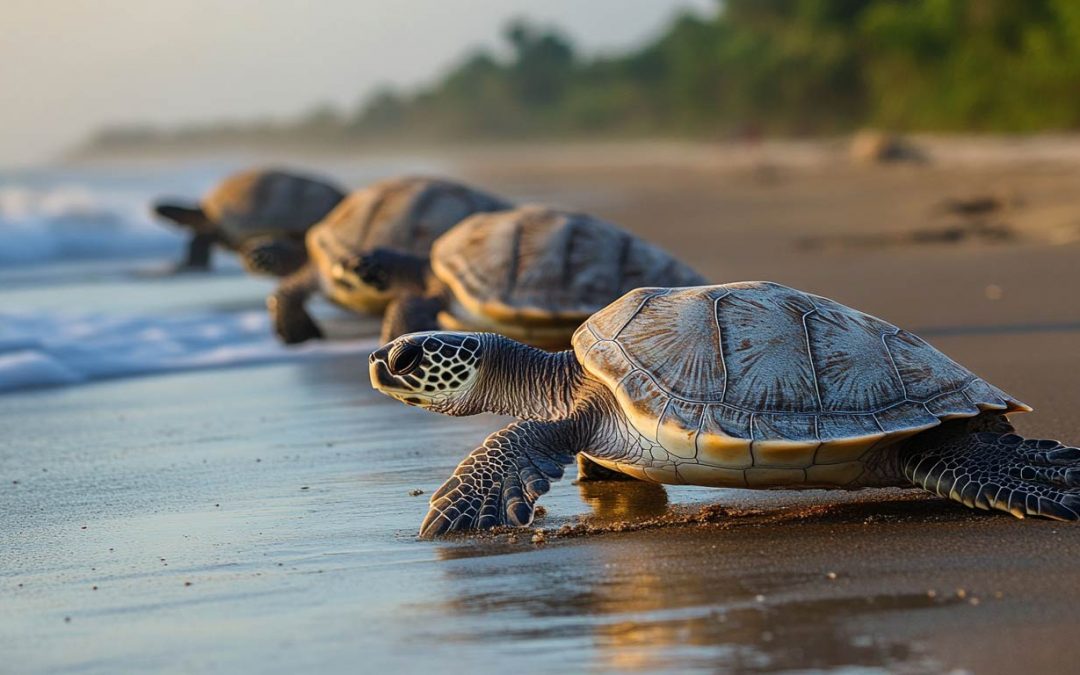Meet Hawaiʻi’s Sea Turtles: Species, Facts, and Protections

When people think of Hawaiʻi, images of lush landscapes, crystal-clear waters, and vibrant marine life come to mind. One of the most recognizable residents of these island waters is the sea turtle or honu, as it’s known in Hawaiian. These ancient mariners have been swimming the oceans for more than 100 million years, and they continue to be a central part of Hawaiʻi’s culture, ecosystem, and natural beauty.
But what types of sea turtles actually live in Hawaiʻi? What makes sea turtles different from land-dwelling turtles? How long do they live? And can someone really keep one as a pet? In this post, we explore the full story behind Hawaiʻi’s turtles, so you’ll know exactly what you’re seeing next time you’re on the beach or in the water.
What Type of Sea Turtles Live in Hawaiʻi?
Out of the seven sea turtle species that exist globally, five can be found in Hawaiian waters, although only two species are regularly seen nearshore.
1. Green Sea Turtle (Chelonia mydas)
The green sea turtle, or honu, is by far the most visible and beloved turtle in Hawaiʻi. These turtles can weigh up to 500 pounds and live primarily on a plant-based diet—consuming algae and seagrass that grow in shallow coastal waters. Unlike most sea turtles, the green turtle often basks on the beach during daylight hours, which is why you might spot one sunning itself on the North Shore of Oʻahu or lounging on the sand in Laniakea.
They are protected by both federal and state laws and considered a threatened species, although their population has seen some positive recovery in recent decades due to conservation efforts.
2. Hawksbill Sea Turtle (Eretmochelys imbricata)
Less commonly seen but no less important is the hawksbill turtle, known locally as honuʻea. These turtles are smaller, typically weighing between 100 and 200 pounds. They’re named for their pointed, beak-like snouts, which they use to feed on sponges found in coral reefs.
Hawksbill turtles are critically endangered, with very few nesting sites remaining in the Hawaiian Islands. Most sightings occur on the Big Island, where they nest in isolated and protected beaches.
Rare Visitors
The leatherback, loggerhead, and olive ridley turtles are rarely seen close to shore but occasionally pass through Hawaiian waters during migration. These species prefer deeper ocean zones and are unlikely to be encountered by snorkelers or beachgoers.
What Are the 7 Kinds of Sea Turtles?
Worldwide, the seven recognized species of sea turtles include:
- Green Turtle (Chelonia mydas)
- Hawksbill Turtle (Eretmochelys imbricata)
- Leatherback Turtle (Dermochelys coriacea)
- Loggerhead Turtle (Caretta caretta)
- Olive Ridley Turtle (Lepidochelys olivacea)
- Kemp’s Ridley Turtle (Lepidochelys kempii)
- Flatback Turtle (Natator depressus)
Of these, only the green and hawksbill turtles are found consistently near the Hawaiian Islands. The others may be seen in deeper waters or during long migrations but are not considered regular residents of Hawaiian reefs or beaches.
What’s the Difference Between a Turtle and a Sea Turtle?
While “turtle” is often used broadly, there are major differences between land turtles (including tortoises) and sea turtles. Understanding these distinctions helps people better appreciate the unique nature of Hawaiʻi’s marine turtles.
Key Differences:
- Habitat
Sea turtles live almost entirely in saltwater environments and only return to land to lay eggs. In contrast, land turtles and tortoises dwell in forests, deserts, or freshwater environments. - Physical Features
Sea turtles have flipper-like limbs for swimming and streamlined shells built for gliding through water. Land turtles have stubby legs and dome-shaped shells for protection. - Defense Mechanisms
Land turtles can usually retract their heads and limbs into their shells for protection. Sea turtles cannot, making them more vulnerable when out of the water. - Diet
Sea turtles primarily eat marine vegetation, sponges, jellyfish, and seagrasses, depending on the species. Land turtles are typically herbivores or omnivores, feeding on a mix of plants, fruit, and small insects.
This means that sea turtles are highly adapted to their oceanic lives—and poorly suited for life on land or in tanks.
Can You Keep a Sea Turtle as a Pet?
In short: absolutely not.
Sea turtles are protected under the Endangered Species Act (ESA) and Hawaiʻi state law. It is illegal to:
- Keep a sea turtle in captivity without special federal permits
- Touch, harass, or feed sea turtles in the wild
- Collect turtle eggs or disturb nesting sites
- Own or sell turtle shells or other turtle-derived items
The laws protecting sea turtles are serious—and the penalties are steep. Violators may face:
- Fines up to $100,000
- Jail time for severe or repeated offenses
- Confiscation of property or gear used in the crime
These regulations exist because sea turtles are slow to mature, lay relatively few eggs, and face numerous threats—including pollution, habitat loss, and illegal poaching. Keeping a sea turtle as a pet not only breaks the law but also contributes to their decline.
What Is the Average Lifespan of a Sea Turtle?
Sea turtles are among the longest-living animals in the ocean. Their lifespans vary by species, but all are known for their longevity and slow maturation rates.
Lifespan by Species:
- Green Sea Turtle: 60–80 years, with some living past 90
- Hawksbill Turtle: Typically 30–50 years, though data is limited due to their elusive nature
- Leatherback Turtle: Estimated 50–70 years, possibly more in the wild
It takes sea turtles 20 to 30 years to reach sexual maturity, meaning conservation efforts must protect turtles for decades before populations can stabilize or recover. That’s why laws, marine protected areas, and responsible tourism all play crucial roles in giving turtles a fighting chance.
Closing Thoughts
Hawaiʻi’s sea turtles are ancient, resilient, and incredibly special. They have shared the ocean with us for generations and are woven into the ecological and cultural fabric of the islands. Whether you’re snorkeling alongside a green sea turtle off the coast of Maui or witnessing a rare hawksbill nesting on the Big Island, these creatures leave a lasting impression.
But with that privilege comes responsibility. Understanding the laws, respecting their space, and appreciating their role in the ecosystem ensures that sea turtles will continue to thrive in Hawaiian waters for generations to come.

